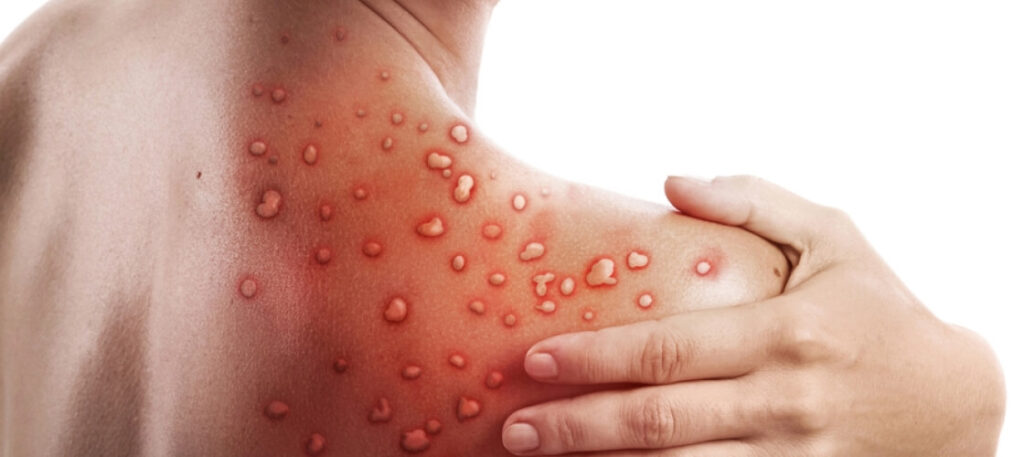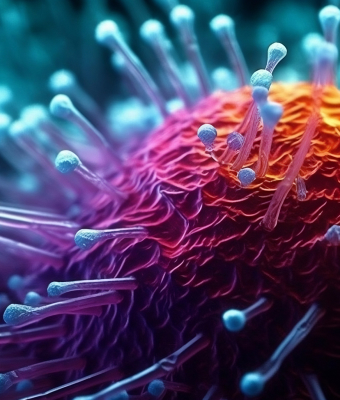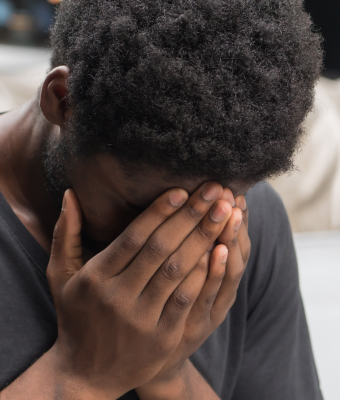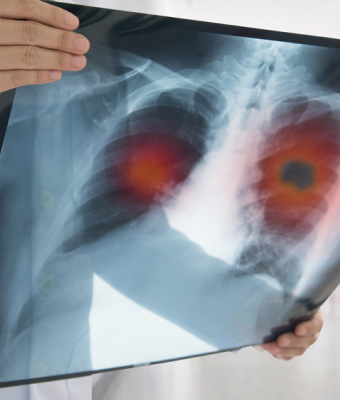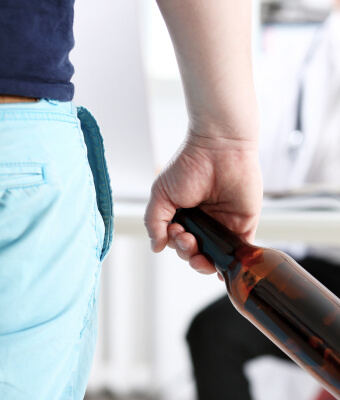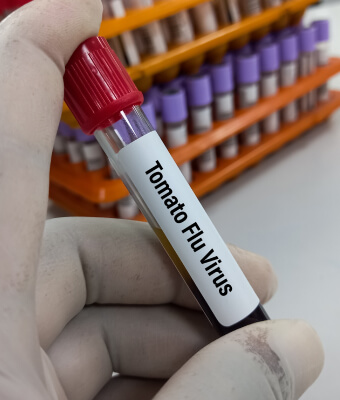Monkeypox and its history
Monkeypox is a rare viral disease that is caused by infection with the same virus which causes smallpox. Monkeypox has a mortality rate of 3–10%.
It was first discovered in 1958 when two outbreaks of pox occurred in the lab monkeys kept for research. Thus, the name, ‘monkeypox.’ However, the first human case of monkeypox was registered in 1970. And since then, monkeypox has been reported in many people across several other central and western African countries.1 The sudden outbreak of monkeypox occurred again in May 2022 in several regions outside Africa. The current outbreak is different than the previous one. Because for the first time in the history, more than 1000 cases in 29 endemic countries were reported by WHO (as of June 2022), issuing a warning against the spread of the zoonotic disease.2
How Serious Is Monkeypox?3
Monkeypox causes an illness that typically lasts from 2 to 4 weeks. It has mild symptoms, but it can be severe in children as they are at the most risk, especially in children who have been exposed to multiple viruses or in people with other health conditions or weak immune systems.
In Africa, monkeypox leads to death in up to 1 of every 10 infected people.
Symptoms4
The symptoms of monkeypox are almost similar to but milder than smallpox. Monkeypox begins with headaches, muscle aches, fever, and exhaustion. However, the main difference between the symptoms of smallpox and monkeypox is that monkeypox causes lymph nodes to swell, while there is no such swelling in smallpox. The incubation period (time from infection to symptoms) for monkeypox is usually 7−14 days but can also range from 5−21 days.
The illness begins with:
- Headache
- Muscle aches
- Chills
- Fever
- Backache
- Exhaustion
- Swollen lymph nodes
Upon the appearance of the fever, the infected person also starts developing a rash, a typical characteristic of monkeypox. This often begins on the face and then spreads to the other parts of the body.
Transmission3
Monkeypox is a contagious disease transmitted from one person to another by close contact with the infected person. It can be spread through
- body fluids like blood or semen
- monkeypox lesions on their skin (including inside their nose and mouth)
- Respiratory droplets
- Things touched by infected people like bedding or clothing
- infected animals (if they bite or scratch)
- eating uncooked contaminated meat
Prevention4
The least we can do during this time is to keep ourselves safe and help stop the spread of the disease. There are several measures that can be taken to prevent infection with the monkeypox virus:
- Avoid contact with wild animals, animals, and products made of animals exclusive in Africa and other countries where monkeypox cases have been rising rampantly, animals that are sick or that have been found dead in the monkeypox-prevalent areas.
- Isolate the infected patients who could be at risk.
- Avoid meeting people who have traveled outside of the US to a country with confirmed cases of monkeypox.
- Avoid direct or indirect contact with an infected person, i.e., any confirmed or probable case of monkeypox.
- Wash hands regularly/sanitize hands, and practice hand hygiene after being in contact with infected animals or humans.
- Use personal protective equipment (PPE) when caring for patients.
- People with any monkeypox-like rash should consult their healthcare provider immediately.
Treatment3
There is no specific treatment for monkeypox. However, in 2019, FDA approved a vaccine, JYNNEOS (commonly used vaccine for smallpox), to prevent monkeypox. Studies show that the smallpox vaccine is 85% effective at preventing monkeypox. This outbreak can also be minimized by turning to antivirals and vaccinia gamma globulin (made from the blood of people recently vaccinated against smallpox). It is also noted that if a person had recently been infected with smallpox, they have already developed some protection against monkeypox. Lastly, on a personal level, the infected person should rest, consume plenty of fluids, and take over-the-counter meds for easy recovery.
References
- Moore M, Zahra F. Monkeypox. InStatPearls [Internet] 2021 Sep 8. StatPearls Publishing.
- Multi-country monkeypox outbreak: situation update. Available at: https://www.who.int/emergencies/disease-outbreak-news/item/2022-DON390 Accessed June 13, 2022.
- Monkeypox: What to Know. Available at: https://www.webmd.com/a-to-z-guides/monkeypox-what-know#:~:text=Monkeypox%20is%20a%20viral%20disease,in%20Central%20and%20West%20Africa Accessed June 13, 2022.
- 2022 U.S. Monkeypox cases. Available at: https://www.cdc.gov/poxvirus/monkeypox/symptoms.html Accessed June 13, 2022.
